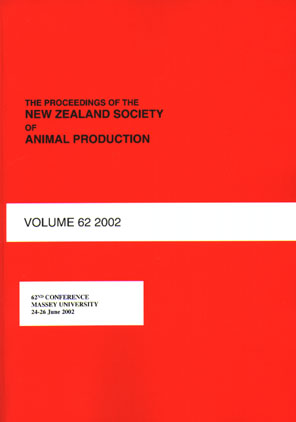Abstract
Wool staple strength was determined in 2120 Romney ewes from 12 sources and 242 Romney rams from 3 sources between 1986 and 1988. Positive, negative and random selection formed High Strength, Low Strength and Control lines, each with 80 ewes and 10 sires. Since 1989 ewe and ram replacements have been selected from within the lines and the number of breeding ewes per line increased to 100. Staple strength was 25% greater in the High Strength line and 15% lower in the Low Strength line than in the Control line when fleeces of hoggets born in the selection lines from 1986 to 1989 were compared (P<0.01). Positively correlated with the staple strength response were responses in staple length, fibre diameter, clean fleece weight and fibre length after carding. The major effect to date of selection for increased staple strength has been to enhance wool growth, with the consequent increase in fibre diameter contributing to the improvement in staple strength. The increase in both the strength and length of staples will have contributed to the increase in fibre length after carding. These preliminary results demonstrate that direct selection for staple strength has been successful. The staple strength response and associated responses in wool production and wool characteristics were of benefit to both producers and processors.
Proceedings of the New Zealand Society of Animal Production, Volume 52, , 241-242, 1992
| Download Full PDF | BibTEX Citation | Endnote Citation | Search the Proceedings |

This work is licensed under a Creative Commons Attribution-NonCommercial-NoDerivatives 4.0 International License.

